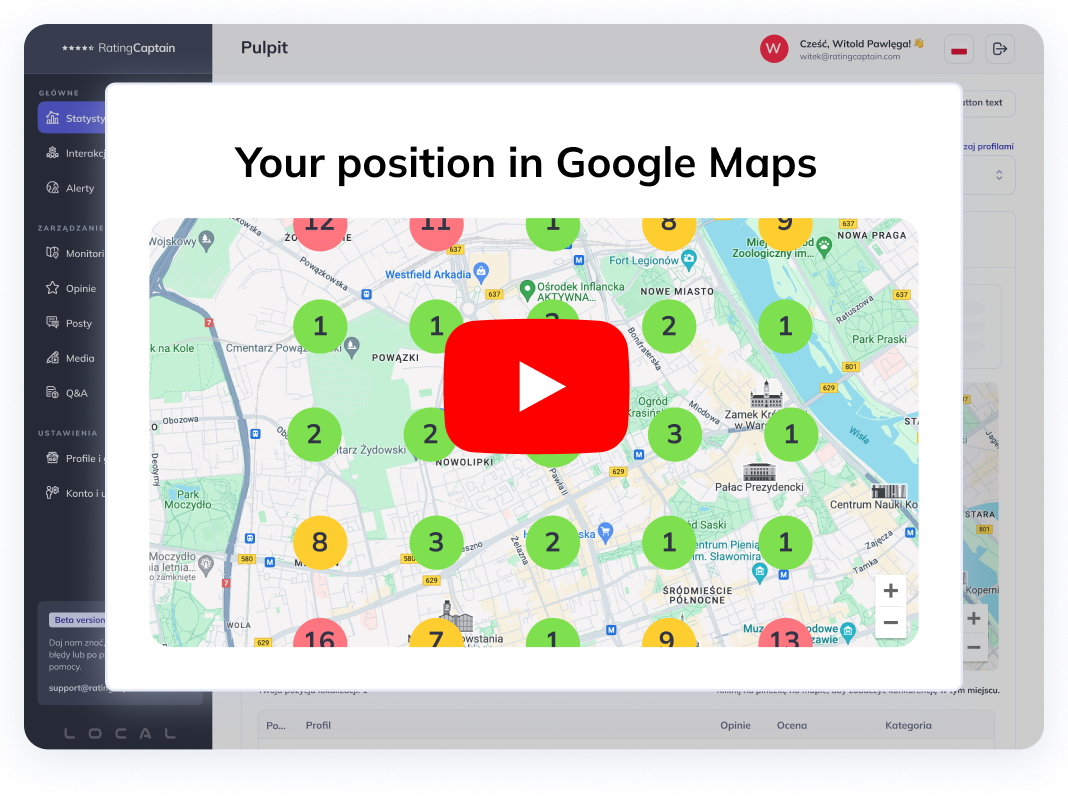

The Easiest Way to Collect
Customer Reviews on Google
What is an HTML and CSS tag? How to code web pages? Definition and glossary of terms

Table of contents
Creating websites has become more popular than ever before. If you're wondering what HTML and CSS tags are and how to code websites, you've come to the right place. In this article, we will cover HTML and CSS tags, their definitions, and key concepts related to website creation.
Definition of HTML Document - Learn the Markup Language for Websites
HTML, which stands for Hypertext Markup Language, is the standard markup language used to create websites. It is the foundation of every web page. HTML allows for structuring and organizing content, as well as defining how the content should be displayed in a web browser.
Basic Structure and Tags in HTML :
Every web page consists of HTML elements that define its structure. Below are some basic HTML elements:
HTML tag (<html>): This is the basic tag that wraps around the entire content of the page.
Head: This area contains metadata of the page, such as the title, description, and links to CSS style sheets.
Body: This is where the visible content of the page resides, including text, images, and multimedia.
Paragraph tag <p>: Used to create paragraphs of text on the page.
Header tags (<h1>, <h2>, <h3>, etc.): Used to mark headings and subheadings on the page, giving the content hierarchy.
Image tag (img): Allows for adding images to the page.
Anchor tag (<a>): Enables creating links to other web pages.
Form tag (<form>): Used for creating forms.
Title tag (title): Used for creating the page title.
HTML Tags
One of the key aspects of HTML5 is semantics. This means that we need to use appropriate tags, tags, and attributes to describe the type of content we are presenting. Semantics help web browsers and search engines better understand the content of the page, which can affect search results.
Examples of semantic tags include <header>, <nav>, <article>, <section>, and <footer>. Each of them has a specific purpose and helps in understanding the structure of the page by browsers and search engines.
CSS - Cascading Style Sheets
Combining HTML and CSS
The best results are achieved by combining HTML and CSS. For example, we can use HTML to define the content of the page and CSS to determine its appearance. This combination allows for creating aesthetically pleasing and functional websites.
Definition of CSS
CSS, Cascading Style Sheets, is a technology used to style and format web pages. CSS allows for separating the content of the page from its presentation, making it easier to create consistent and attractive pages.
CSS Style Sheets
CSS style sheets contain rules regarding the appearance of HTML elements. With CSS, we can specify text color, background, margins, fonts, and many other properties.
How to Code Websites? HTML Structure:
Now that we understand the basics of HTML and CSS, we can consider how to code websites.
-
Learn HTML structure: Understanding the HTML structure is necessary to understand the construction of web pages. You need to know which tags to use for different elements of the page.
-
Learn Cascading Style Sheets (CSS): Learn how to create CSS style sheets and use them to customize the appearance of the page.
-
Apply semantic meaning: Use semantic tags to make the page more readable for browsers and search engines.
-
Optimize the page for SEO: Use relevant keywords related to the page content to improve search results (SEO).
-
Ensure responsiveness: Make sure the page is responsive and displays well on different devices.
-
Testing: Regularly test your website to ensure it works correctly and is compatible with different browsers.
Glossary of Terms:
-
HTML Doctype: Declaration at the beginning of an HTML document that specifies which version of HTML is being used.
-
Meta: The
<meta>tag contains basic information about the page, such as the description and keywords.
-
HTML 5: The latest version of the HTML language, introducing many new features and capabilities.
-
W3C Web Consortium: An organization responsible for web standards, overseeing the development of HTML and CSS.
A Few Words About JavaScript:
JavaScript, also known as JS, is a programming language used to create interactive and dynamic web pages. It is a scripting language, which means that JavaScript code is executed directly in the user's web browser, allowing for interaction with the page without the need to reload it.
JavaScript Functions:
JavaScript allows for creating various functions on web pages, including:
-
Form validation: JavaScript can help validate user input in web forms, preventing incorrect entries.
-
Visual effects: JavaScript allows us to create visual effects such as animations, transition effects, CSS style changes, and many others.
-
Server communication: JavaScript enables asynchronous communication with a web server, allowing for dynamic data loading without refreshing the entire page.
-
User interaction: JavaScript scripts allow for creating interactive elements on the page, such as buttons, navigation menus, and other elements that respond to user actions.
Rating Captain
If you need an application for collecting and managing reviews, Rating Captain can help. It is an efficient tool that supports businesses in acquiring and managing reviews. In the Rating Captain application, sending even hundreds of invitations will take less than 10 minutes.
This application allows customers to easily and conveniently share their feedback on the quality of your services when purchasing a product or service, thereby increasing your company's awareness among customers on the Internet.
Please rate this article
Try our new
Local SEO tool
Manage and track visibility of your
Google Business Profiles

